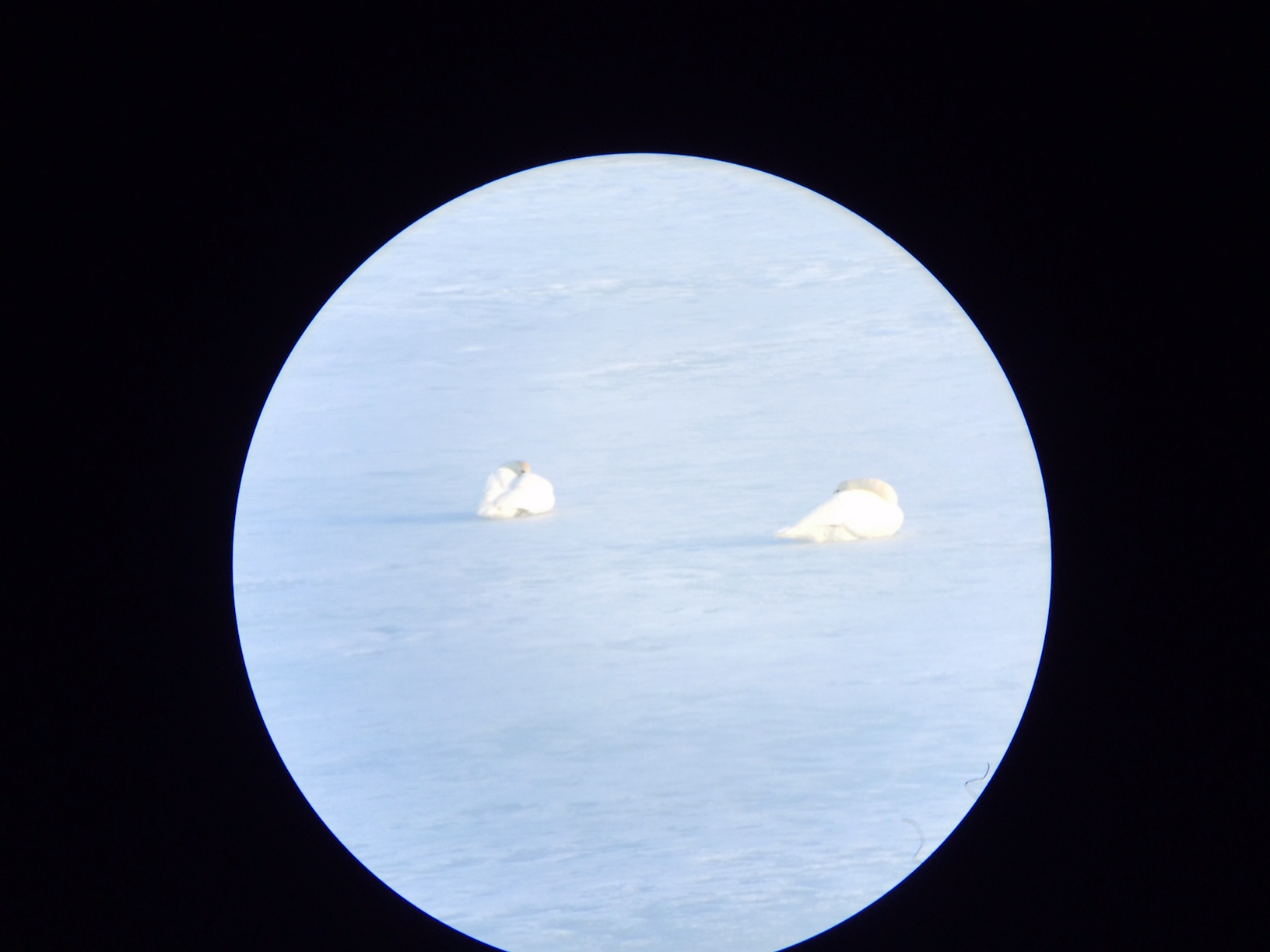
Trumpeter Swans first began making their appearances in the Blackfoot in early March, back from wintering grounds in southwestern Montana, Idaho, and Wyoming. Since then, we’ve documented the return of the five pairs that nested here last year, in addition to several other Blackfoot swans, and lots of unbanded swans that are likely here on their way back to summer in Canada or Alaska.
We know of at least 16 different Blackfoot swans that have returned this spring, and some of those are paired up with unbanded swans that either hatched here in the valley in the past few years or joined up with them on their winter grounds.
Not only are our wetlands here providing great nesting habitat for “our” swans, but they also offer great opportunities for those swans from more northern populations traveling through in the spring and fall. Migration is a physically stressful and dangerous event for birds, and good quality stopover sites can make a significant difference in birds being able to complete their difficult journeys and to start the breeding season in good condition.
One day in March I watched 29 trumpeters, all within a 1/4-mile long stretch of wetland and creek habitat in the valley bottom between Ovando and Helmville. They were loafing in the sun on the banks and feeding in the shallow water. One of them was Blackfoot swan 6A0, who was paired up with an uncollared swan. They both appeared to be nest-building; pulling up material and placing it around themselves. The uncollared bird was up on a goose nest or some elevated structure made of vegetation. They were likely “practicing” for the coming summer! After I watched for 15-20 minutes, they flew north low, trumpeting, over some of the other swans and landed by a clump of them. They displayed a bit in the water and then all settled down.
